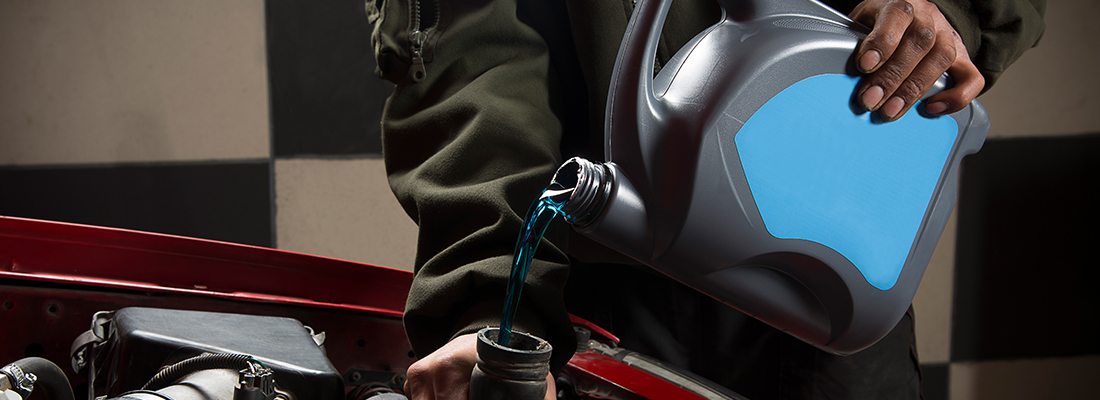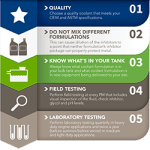What does your coolant color really tell you?

There was a time when we could use the color of the coolant to help determine the type of coolant formulation in the equipment. The majority of the heavy-duty engine coolants in the market would have been a conventional formulation. The only difference was in the type and amount of inhibitors but they were still compatible with one another. Some brands were a nitrite/silicate/borate blend while others might be a nitrite/molybdenum/silicate/phosphate blend. Sustaining the coolant simply meant maintaining the SCA level. Maintenance on the fluid was relatively easy as long as there weren’t any mechanical or contamination issues present.
Today, there seems to be a coolant for every color under the rainbow, and we can no longer base the coolant formulation by color alone. The color of the coolant cannot be used to determine the formulation. Testing the coolant and fluid properties will help determine the type of coolant inhibitors present in the formulation so you can maintain that fluid properly. The coolant formulation will be based on the type of coolant inhibitors in the fluid for prime metal-pitting protection.
The most commonly known coolant formulations on the market today are Conventional, Organic Acid Technology (OAT), NAPS (nitrite, amine, phosphate, silicon free), Hybrid Organic Acid Technology (HOAT), and Universal. The conventional formulations will use inorganic inhibitors. The OAT formulations will use organic acid inhibitors and may use a combination of nitrite and molybdenum in the formulation. The NAPS formulations will only use organic acid inhibitors. The HOAT and Universal formulations will use a combination of inorganic and organic acid inhibitors. Mixing different coolant formulations may dilute the inhibitors to a point that the coolant inhibitor won’t be adequate to protect the equipment. Coolant formulations are constantly evolving to help extend coolant drains and to maintain equipment longer.
 It’s easy to become overwhelmed when trying to understand the multitude of variation among formulations, but it can actually be broken down quite simply. Take a look at our list of five considerations for selecting and using the proper coolant formulation.
It’s easy to become overwhelmed when trying to understand the multitude of variation among formulations, but it can actually be broken down quite simply. Take a look at our list of five considerations for selecting and using the proper coolant formulation.
Learn more about getting a coolant analysis program started with POLARIS Laboratories®.

Proven Impact. Proven Uptime. Proven Savings.
Let us prove it to you.



